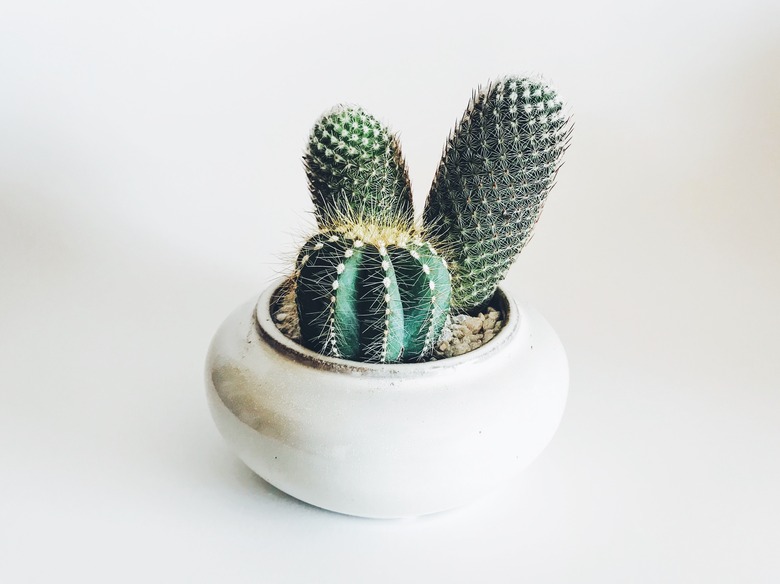How To Take Care Of A Cactus Plant
There are approximately 2,000 species of cactus in the Cactaceae family, the vast majority of which are native to arid regions. Many cacti are small enough to be grown indoors, though some winter hardy varieties can also be cultivated outdoors in the landscape in parts of the U.S. Many types of cactus flower, and most have spines.
If you are wondering how to take care of a cactus, you'll be happy to know that most cacti are low-maintenance plants.
Cactus Environmental Needs
When they are actively growing, most cacti need to be kept at temperatures between 65 and 85°F. In the winter, a 45 to 55°F range is suitable for dormant plants.
Indoor cacti are best kept near a sunny window where they receive filtered light, not direct sun.
Warning
Do not place cacti in direct sunlight, as this can cause the plant to burn.
How to Care for a Cactus
Like any other plant, cactus plants require thoughtful watering and fertilization to perform their best.
Watering
As plants native to arid regions, cactus plants don't need a lot of water. During the growing season, you should water your cactus plants when the soil feels slightly dry. Watering should be reduced in the wintertime.
Not overwatering cactus plants is crucial, as excessive moisture can quickly cause the roots to rot. Soil with good drainage helps to avoid this problem.
Fertilizing
Indoor cactus plants benefit from feeding with a fertilizer low in nitrogen during the summer, beginning in June. You can fertilize indoor cacti through September, but avoid fertilizing in winter when the plants are dormant.
Repotting
In general, cacti plants like to be root-bound, which means that the roots have no more space to grow and begin to overlap.
About every two to four years, however, it is often necessary to repot cactus plants. It's time to repot if you can see roots peeking through the drainage holes.
When repotting cacti, use a pot that is only slightly larger than the current container. A pot that is too big requires more soil than is necessary, which can lead to moisture retention and root rot.
Tip
Plan to repot a cactus plant every two to four years.
Pests
Like many indoor plants, cacti can become infested with pests, including aphids, mealybugs and spider mites. Horticultural oils and insecticidal soaps can be used to keep these pests under control. Scale, another pest of cactus plants, can sometimes be picked off manually.
It is important to isolate infested cacti from other plants in the home to prevent the infestation from spreading.
Cactus Care Outdoors
- Like cacti grown indoors, cactus plants grown outside in the landscape need well-draining soil. It may be necessary to plant them in a raised bed. Using a growing medium that contains a small amount of organic matter and plenty of gravel also promotes drainage.
- Cacti planted in the ground need even less water than those grown in containers.
- These plants also need to receive plenty of sun but benefit from some shade during the hottest part of the afternoon to avoid scorching.
- Indoor cactus plants can be placed outside during the summer months. You'll want to introduce the plants to outdoor sun gradually, however. That entails placing the potted cacti in partial sun for a few weeks before moving them to a brighter location.

